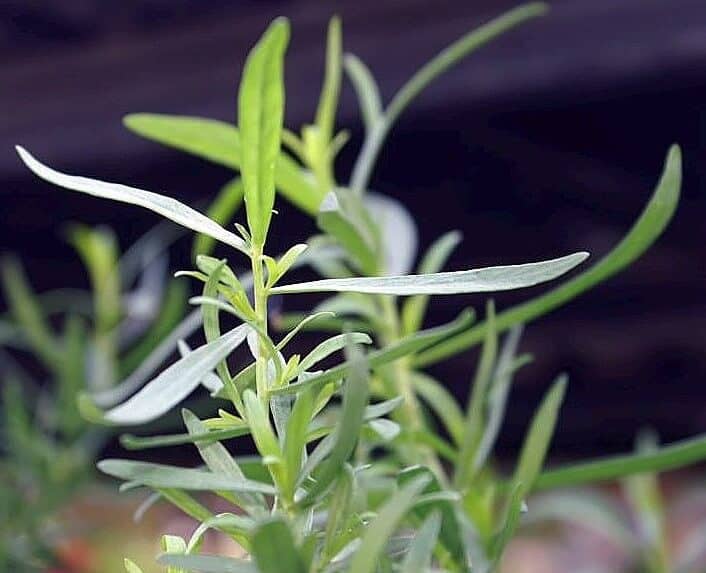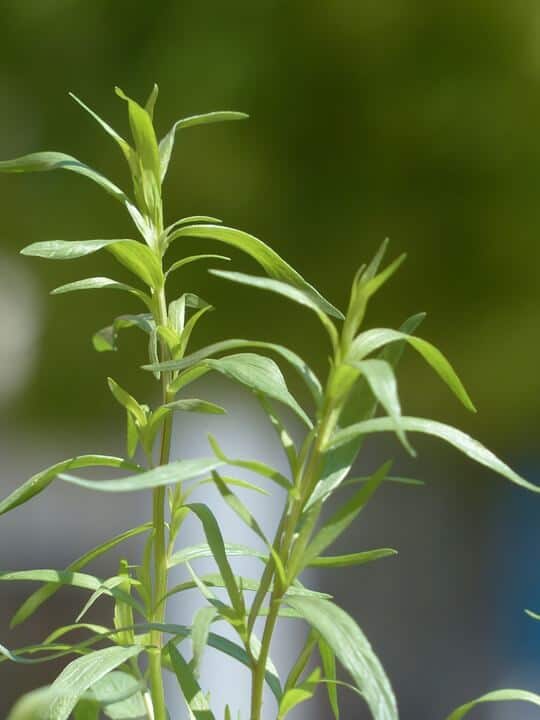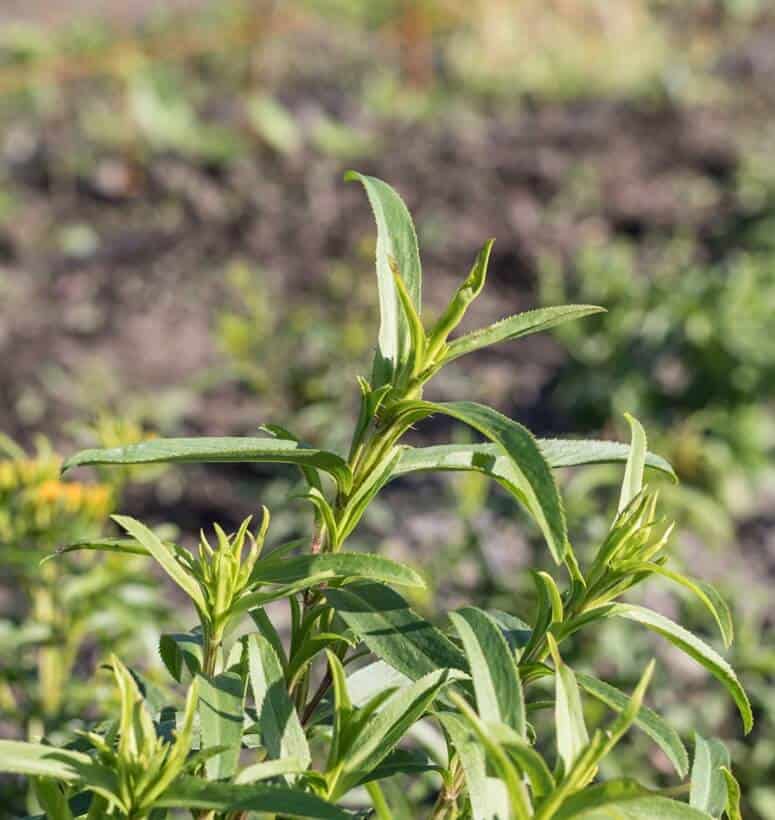Tarragon, a unique perennial herb, adds a distinct flavor to dishes and pairs well with fish, eggs, chicken, and green vegetables. Its flavor is reminiscent of fennel, making it a popular choice in traditional recipes.
Tarragon can be enjoyed in both dried and fresh forms, and it offers various health benefits. It has been known to help lower blood sugar, improve sleep quality, and reduce inflammation and pain.
Growing tarragon at home can be a rewarding and enjoyable gardening activity. So, let’s dig into the soil and explore the world of tarragon cultivation!
Tarragon Varieties
Before embarking on the journey of planting tarragon, it’s important to familiarize yourself with the different varieties available. There are three main tarragon varieties, each suited for specific hardiness zones. By selecting the right variety for your climate, you can ensure successful growth and cultivation of this flavorful herb. Let’s explore the various tarragon options tailored to your specific hardiness zone.
French Tarragon (Artemisia dracunculoides)

German tarragon, also known as French tarragon, possesses a distinct essential oil that enhances the flavors of various culinary creations. This particular variety of tarragon thrives in hardiness zones 5 to 4B, provided it receives proper winter protection. French tarragon flourishes when exposed to full sunlight but can also tolerate partial shade.
It’s important to note that French tarragon is typically propagated through cuttings and requires well-drained soil for optimal growth.

In contrast to French tarragon, Russian tarragon offers a milder flavor profile, making it less commonly used for culinary purposes. Instead, it is often appreciated for its ornamental value in gardens or utilized for its potential health benefits.
Russian tarragon demonstrates remarkable hardiness, thriving in zone 4, even enduring freezing temperatures as low as 30 degrees below zero Fahrenheit, which is the average winter temperature in that zone.
Mexican tarragon (Tagetes lucida)

Belonging to the marigold family, Mexican tarragon offers an alternative to French tarragon in culinary applications. It is often used as a substitute when the latter is unavailable, imparting a similar flavor profile to dishes.
Tarragon Cultivation
Now that you’re familiar with the different types of tarragon, it’s time to delve into the cultivation process, covering everything from soil preparation to division. Let’s get started!
-
Soil Requirements
To ensure successful growth of tarragon, it is important to create the right soil conditions. Tarragon thrives in soil enriched with aged compost, with a pH level ranging from 6.3 to 7.5. It is crucial to maintain well-drained soil and avoid excessive moisture or acidity.
Tarragon is more tolerant of drought than overwatering. If the soil becomes overly moist or acidic, it can adversely affect the flavor and overall health of the tarragon plant.
-
Sun Requirements
Tarragon thrives when exposed to full and direct sunlight. However, if you reside in a particularly hot region, it is advisable to provide morning sunlight only, as the intense heat might be detrimental to the plant. Tarragon flourishes in warm temperatures, making it important to create an environment that offers the ideal conditions for its growth.
-
Hardiness
If you reside in zone 4 or higher, you are in luck as tarragon thrives in your garden!
Tarragon is a resilient perennial herb that can withstand zone 4 and higher. While it is tolerant of both cold and hot temperatures, extreme freezing weather may cause it to perish.
-
Water
It is crucial to avoid overwatering your tarragon. Initially, ensure that the soil remains moist until the plants have established themselves. Once established, provide occasional light watering every few days.
Tarragon can tolerate periods of dryness, as it is drought-resistant. However, both overwatering and underwatering can have an impact on the flavor and quality of the leaves. Finding the right balance is key.
-
Fertilizer
To enhance the flavor of your tarragon, it is recommended to use minimal fertilizer. Remember, less is more in this case.
While fertilizing your tarragon is optional, if you choose to do so, it is best to apply fertilizer during the initial planting stage.
-
Mulch
Mulching is a beneficial practice for many plants, including herbs like tarragon. By applying a layer of mulch, composed of materials such as sawdust or compost, you can reap several advantages such as reducing water evaporation, regulating soil temperature, suppressing weed growth, and improving soil fertility.
In regions with cold climates or during winter, it is advisable to mulch around tarragon plants. This helps protect the roots when they go dormant and experience dieback. The mulch acts as insulation, providing additional warmth and safeguarding the plant during periods of frost or freezing temperatures.
-
Pruning
Regular pruning is essential for maintaining the health and flavor of tarragon, especially during the summer season when the sun’s intensity is at its peak. To prevent tarragon from bolting and developing bitter-tasting leaves, it is recommended to prune it weekly.
Pruning tarragon is a straightforward process. Simply pinch off the top 2 inches of all new shoots that are emerging from the plant. This practice not only encourages the growth of a fuller and bushier plant but also promotes the development of robust root systems. By engaging in regular pruning, you can ensure that your tarragon remains vibrant and productive throughout the growing season.
-
Division
As spring arrives, you will notice that your tarragon plant begins to expand and fill up space in your garden. To ensure its healthy growth, it’s important to provide adequate breathing room for the plant.
Dividing the tarragon plant every three years is a beneficial practice that allows it to thrive. To do this, carefully dig up large portions of the plant, ensuring to separate the tangled roots. Once divided, you can transplant these individual sections to other areas of your garden or give them to fellow gardeners who may want to grow their own tarragon.
By periodically dividing your tarragon plant, you not only prevent overcrowding but also encourage the development of new, vigorous growth. This process helps maintain the plant’s health and vitality over time.
Best Methods to Grow Tarragon
-
Stem Cutting
One of the most popular and effective methods for growing tarragon is through stem cuttings. This technique involves taking a portion of an existing tarragon plant and using it to propagate a new one.
To propagate tarragon through stem cuttings, you will need to carefully cut a stem that is approximately three to four inches long. Ensure that the cutting is taken from a healthy and robust part of the plant. Prepare a pot with a well-draining soil mix, and make sure there are drainage holes at the bottom to prevent waterlogging.
Insert the stem cutting into the soil, making sure that at least one node (the point where the leaves emerge) is buried in the soil. This node is where the roots will develop. Place the pot in a location that receives bright, indirect sunlight and maintain consistent moisture in the soil.
With proper care and attention, the stem cutting will develop roots and eventually grow into a new tarragon plant. This method is widely practiced and has proven to be successful for propagating tarragon.
-
Root Cutting
Another effective method for propagating tarragon is through root cuttings. This technique involves harvesting and cutting the roots of an established tarragon plant to create new plants.
To propagate tarragon through root cuttings, begin by digging up the plant’s roots when it is in a dormant state. Select healthy and vigorous roots, then trim them to a length of around 3 to 6 inches.
Next, prepare a container or tray and lay the root cuttings horizontally, pushing them into the soil to a depth of about half an inch. Ensure that the cuttings are spaced apart adequately to allow for growth.
Maintain humidity around the cuttings by misting them regularly and keep a close eye on them until sprouts begin to emerge. Once the sprouts have grown and developed some small root hairs, they can be transplanted into the garden or individual pots for further growth.
By following these steps, you can successfully propagate tarragon through root cuttings, expanding your tarragon garden and enjoying the benefits of this flavorful herb.
-
Growing from Seed
It’s important to note that Russian tarragon is the only variety that can be grown from seeds. All other types of tarragon must be propagated through cuttings.
Growing Russian tarragon from seeds is a straightforward process. Here’s how you can do it:
Begin by sowing around four seeds in a pot or container. Press the seeds lightly into the soil, ensuring they are slightly covered. Moisten the soil with water and then wait patiently for about 10 to 12 days for germination to occur at a relatively slow rate.
During this germination period, it’s essential to provide adequate moisture and maintain a suitable environment for seedling growth. With time and care, you will witness the emergence of young Russian tarragon plants from the seeds.
Remember, if you wish to grow other varieties of tarragon, such as French or Mexican tarragon, you will need to rely on the more reliable method of using cuttings to propagate these herb plants.
How to Care for Tarragon
-
Pests/Disease
While tarragon generally doesn’t face major pest problems, it does have some vulnerabilities. The herb is particularly sensitive to downy and powdery mildew, especially when the soil becomes excessively wet. This can lead to the development of fungal infections and, in severe cases, root rot may occur. Therefore, it is important to maintain proper drainage and avoid overwatering to prevent these issues from affecting your tarragon plants. Regular monitoring and appropriate care will help keep your tarragon healthy and thriving.
-
Propagating Tarragon
To grow tarragon, you have two options: propagating it from cuttings or purchasing an established plant. For propagation, select a young stem of about five to six inches in length. Remove the leaves from the bottom third of the stem and plant it in moist soil. Another method is root division.
Timing is crucial when propagating tarragon. Late spring or early summer is ideal for taking stem cuttings, while late winter is the optimal time for root division. By following these guidelines, you can ensure successful propagation and enhance your tarragon garden.
-
Harvesting Tarragon
Tarragon, a perennial herb, can be harvested throughout the summer season. However, it’s important to cease harvesting at least a month prior to the anticipated arrival of the first frost.
When should you begin harvesting? Once the stems have grown to a height of six inches, you can start picking the tarragon leaves.
Here’s a pro-tip: Trim the top of the plant regularly during its peak growing season. This not only helps maintain the herb’s optimal flavor but also stimulates bushier growth, resulting in a more abundant tarragon plant.
-
Storing Tarragon
It’s time to store your tarragon!
To keep it fresh, there are a few options. You can place the fresh stems in the refrigerator, in a glass of water, or wrap them in a damp paper towel and store them in a container with some humidity.
For longer-term preservation, freezing is a great option.
If you prefer to dry the tarragon, gather the stems and tie them together. Hang them upside down in a cool and shaded area until they have fully dried.
Once dried, crumble the leaves into a paper container and transfer them to an airtight container with a secure lid. Remember not to store the dried tarragon for more than 30 days for the best flavor.